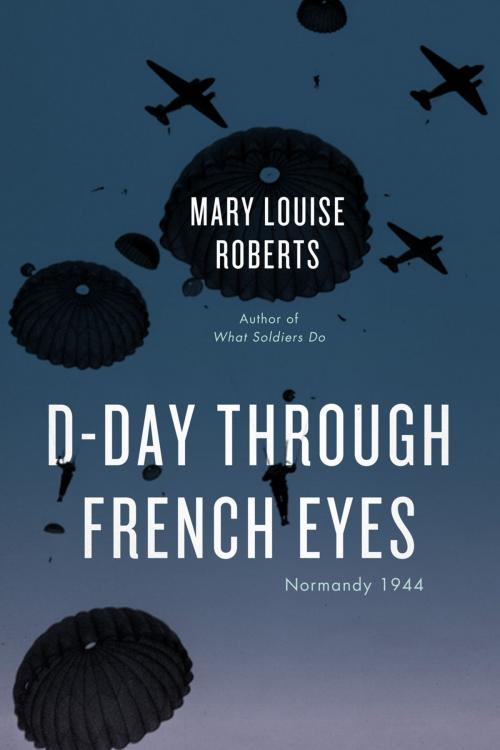| Author: | Mary Louise Roberts | ISBN: | 9780226137049 |
| Publisher: | University of Chicago Press | Publication: | May 16, 2014 |
| Imprint: | University of Chicago Press | Language: | English |
| Author: | Mary Louise Roberts |
| ISBN: | 9780226137049 |
| Publisher: | University of Chicago Press |
| Publication: | May 16, 2014 |
| Imprint: | University of Chicago Press |
| Language: | English |
“Like big black umbrellas, they rain down on the fields across the way, and then disappear behind the black line of the hedges.” Silent parachutes dotting the night sky—that’s how one woman in Normandy in June of 1944 learned that the D-Day invasion was under way. Though they yearned for liberation, the French in Normandy nonetheless had to steel themselves for war, knowing that their homes and land and fellow citizens would have to bear the brunt of the attack. Already battered by years of Nazi occupation, they knew they had one more trial to undergo even as freedom beckoned.
With D-Day through French Eyes, Mary Louise Roberts turns the usual stories of D-Day around, taking readers across the Channel to view the invasion anew. Roberts builds her history from an impressive range of gripping first-person accounts of the invasion as seen by French citizens throughout the region. A farm family notices that cabbage is missing from their garden—then discovers that the guilty culprits are American paratroopers hiding in the cowshed. Fishermen rescue pilots from the wreck of their B-17, only to struggle to find clothes big enough to disguise them as civilians. A young man learns how to estimate the altitude of bombers and to determine whether a bomb was whistling overhead or silently headed straight for them. In small towns across Normandy, civilians hid wounded paratroopers, often at the risk of their own lives. When the allied infantry arrived, they guided soldiers to hidden paths and little-known bridges, giving them crucial advantages over the German occupiers. Through story after story, Roberts builds up an unprecedented picture of the face of battle as seen by grateful, if worried, civilians.
As she did in her acclaimed account of GIs in postwar France, What Soldiers Do, Roberts here reinvigorates and reinvents a story we thought we knew. The result is a fresh perspective on the heroism, sacrifice, and achievement of D-Day.
“Like big black umbrellas, they rain down on the fields across the way, and then disappear behind the black line of the hedges.” Silent parachutes dotting the night sky—that’s how one woman in Normandy in June of 1944 learned that the D-Day invasion was under way. Though they yearned for liberation, the French in Normandy nonetheless had to steel themselves for war, knowing that their homes and land and fellow citizens would have to bear the brunt of the attack. Already battered by years of Nazi occupation, they knew they had one more trial to undergo even as freedom beckoned.
With D-Day through French Eyes, Mary Louise Roberts turns the usual stories of D-Day around, taking readers across the Channel to view the invasion anew. Roberts builds her history from an impressive range of gripping first-person accounts of the invasion as seen by French citizens throughout the region. A farm family notices that cabbage is missing from their garden—then discovers that the guilty culprits are American paratroopers hiding in the cowshed. Fishermen rescue pilots from the wreck of their B-17, only to struggle to find clothes big enough to disguise them as civilians. A young man learns how to estimate the altitude of bombers and to determine whether a bomb was whistling overhead or silently headed straight for them. In small towns across Normandy, civilians hid wounded paratroopers, often at the risk of their own lives. When the allied infantry arrived, they guided soldiers to hidden paths and little-known bridges, giving them crucial advantages over the German occupiers. Through story after story, Roberts builds up an unprecedented picture of the face of battle as seen by grateful, if worried, civilians.
As she did in her acclaimed account of GIs in postwar France, What Soldiers Do, Roberts here reinvigorates and reinvents a story we thought we knew. The result is a fresh perspective on the heroism, sacrifice, and achievement of D-Day.















